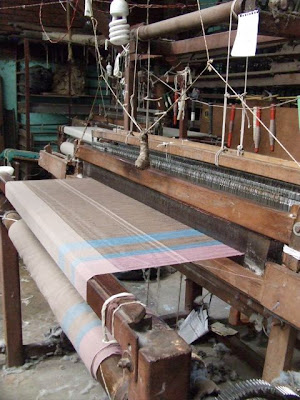Tablet weaving (often known as card weaving in the United States) is where cards are used to create patterned bands of woven fabric. This technique is limited to narrow work such as belts, straps or trim for garments.
Examples have been found in Germany and France that suggest this technique goes at least as far back as the early Iron age and are presumed to have been well used by the Vikings.
Tablets have long been made from materials such as bark, wood, bone, horn, leather and metal whereas modern cards are frequently made from card or plastics. I crafted the two tablets above from buffalo horn and Ipe (a Brazilian ironwood) choosing to try out a simple square disc with just four holes before having a bash at anything more advanced. Tablets are typically a regular polygon (a shape with all angles equal and side lengths also equal) with holes in each corner and sometimes the centre too.
I found tablet weaving to be far more complex and involved than weaving with a simple rigid heddle and decided to stick with a very simple three colour pattern. Designing a pattern and correctly warping the discs takes some research and concentration and I'd best not confuse anyone with any attempts to explain the procedure. I managed to find plenty of helpful online articles and blogs from which I was able to pick up the basics to get me started.
As you can see from the above image, it is possible to create decorative patterns as opposed to the simple plain weave of a rigid heddle. The compact loom frame used for this weaving is a recent prototype that I made for the mini rigid heddles that we produce. Both the frame and tablets will be available from spring 2014.
To view my blog entry covering the frame and rigid heddle, please follow the link below.








































